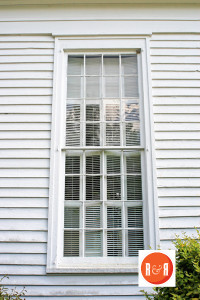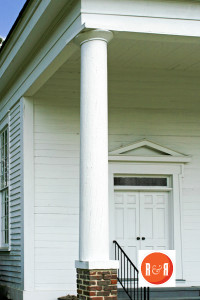“A lovely rural church of deep historic roots to the community.”
7220 Highway 908
City Directories and History: Of all of the worship centers that I’ve visited in South Carolina, none surprised me more than this building, a real “sleeper”. After reading, researching and visiting churches, I thought that I knew where all of the old ones were. A friend mentioned to me in 2007 that her home church was old, dating back to the 1700s. My response was cordial but skeptical. A Methodist church in the 1700s, not hardly. But I wrote the name down, “Central United Methodist Church” somewhere in the Brittons Neck area.
Prior to my next trip to that area I began researching Central United Methodist Church. First attempt was dependable Google – nothing. Then SC Department of Archives & History, The Nation Register – nothing. SC Historic Roadside Marker Project, Marion County – nothing. It’s almost like it didn’t exist, or at least historically speaking. She told me it was there, I believed her, but maybe the congregation was old and the building was new. Off I went one beautiful Saturday in search of a ghost building on Highway 908 in Marion County.
When I saw a building that may be what I was looking for, it was one of those slam on the breaks, an almost three car pileup moments. I couldn’t believe what my eyes were seeing. Sitting there beside the road all by itself was one of the neatest, well kept examples of Southern Meeting House, wood lap siding churches that I had seen in a long time. What did the sign in front of the build say? “Central United Methodist Church, Established 1735” I knew that I was at the right place.

Images from the Segars Collection – 2007


I went through my normal routine of measuring the building, examining the nail heads, looking under the building for saw marks, checking out the glass for bubbles, all of the test I typically run in order to assign a quick date to the building. It was passing all of the early construction test, this building may in fact be the real deal. Little did I know just how true that assessment was until I got home and did further, deeper research. Based on my findings, this unknown building is the seventh oldest standing church building in South Carolina.
Before I go any further I would like to acknowledge Rev. F. Carlisle Smith, whom I’ve never met, for a paper that he wrote in 1986 about the history of Central. If it were not for his paper, I would know absolutely nothing about this wonderful gem and its life. Even after further research, I’m yet to find much more written about this congregation. With very little corroborating documentation, I wonder from time to time if I have accurate information. I have read enough to believe again that this building is in fact real. Now let me tell you what I’ve found.
This area of the Pee Dee was settled in 1735 by a group of Anglican from England, many having the last name of Britton. They realized that they would be settling in a remote corner of the Prince George and Prince Fredrick Parishes. They had an idea that they may not get much assistance from the Parish Church with their spiritual needs. So with their worldly possessions they also brought brick for a church building and their own preacher. Upon arrival they cut long leaf pine trees for framing timbers and flooring as well as black cypress trees for siding. This 38′ x 66′ church building was built on the road to the Tan Yard area. The four 12″ round columns across the front, supporting the roof, are each in fact a solid tree. The column making process was very simple: cut a tree down, remove the limbs and bark, then stand it up- instant round tapered column. This process really makes more since than the effort that we go through today to glue little pieces of wood together and turn them round on a large lath. They named their church All Saints Anglican. There is very little written about their first preacher, Rev. Dr. Robert Hunter or his successor Rev. Robert Allison.
The church and the area flourished until the Revolutionary War, which took a great toll on the men in the area. On January 4, 1786, when circuit riding preacher Francis Asbury stopped by, he found a lovely, well maintained church building without a congregation. Due to his leadership and the recently formed Methodist denomination in 1771, All Saints Anglican switched over to the Methodist faith. Again the church began to grow with great interest. In the early 1850s a population shift began to occur and by 1858 there was a larger need for a church building in the Old Neck Cemetery area than in the Tan Yard area.
Instead of building another church building, the two groups decided to move the All Saint’s building. This was not your typical “call a house moving company to move the building 14 miles in 1858”. They dismantled the building and reassembled it at the Old Neck location. This was really not as hard as you may think. In 1735, and even into the late 1800s buildings were built with Roman numerals stamped on the framing timbers and pegged together. So disassembling a building was a simple task of removing the siding, driving the wooden pegs back out, moving it piece by piece and reassembling it by the numbers. Ingenious isn’t it? They were no dummies.
The “move” went so well this time, that in 1917 when another change seemed to be inevitable, it was moved again. The membership of Old Neck and Nebo Methodist was low, a merger was suggested. They were having a problem deciding who’s building to use and where the new church would be located. The decision to move the Old Neck church building to a central location and form a new church was made. It had already been proven that the building could be moved, so it was dismantled and reassembled again. Don’t you love it when people appear to be practical and get along so well. Example: reuse an existing building, move it to a central location and name it Central Methodist Church.
Written by and contributed to R&R by author and photographer, Bill Segars, 10/2/15
Stay Connected
Explore history, houses, and stories across S.C. Your membership provides you with updates on regional topics, information on historic research, preservation, and monthly feature articles. But remember R&R wants to hear from you and assist in preserving your own family genealogy and memorabilia.
Visit the Southern Queries – Forum to receive assistance in answering questions, discuss genealogy, and enjoy exploring preservation topics with other members. Also listed are several history and genealogical researchers for hire.
User comments welcome — post at the bottom of this page.
Please enjoy this structure and all those listed in Roots and Recall. But remember each is private property. So view them from a distance or from a public area such as the sidewalk or public road.
Do you have information to share and preserve? Family, school, church, or other older photos and stories are welcome. Send them digitally through the “Share Your Story” link, so they too might be posted on Roots and Recall.
Thanks!

